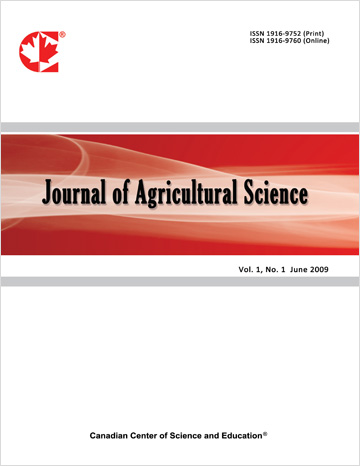Effects of Integrated Plant Nutrient Management (IPNM) Practices on the Sustainability of Maize-based Farming Systems in Nepal
- Tejendra Chapagain
- Gam B. Gurung
Abstract
Maize is a staple summer crop grown in the hilly areas of Nepal, where the soil is fragile and fertility is declining over years due primarily to degradation of natural resource base, high rates of soil erosion, increased cropping intensity and inadequate replenishment of soil nutrients. Forum for Rural Welfare and Agricultural Reform for Development (FORWARD) with the financial support from Hill Maize Research Program (HMRP/CYMMIT) conducted eight Integrated Plant Nutrient Systems (IPNS) trials, 16 Farm Yard Manure (FYM) improvement demonstrations and 16 conservation farming demonstrations each year through two women farmer groups since 2003 in Makawanpur District in order to raise the awareness of farmers on sustainable soil management practices through better utilization of locally available and external resources. The three years' trial results revealed that the maize crop with IPNS (15 t ha-1 FYM + 60:30:30 NPK kg ha-1) was better with respect to crop vigor and grain yields compared to the control treatment (farmers' practice with FYM and urea top dressing). The Improved cultivar with IPNS practices increased the grain yield by 64% (p<0.01) compared to the Local cultivar under farmers' managed condition. The plots with IPNS also exhibited positive effects on the performance of millet, a subsequent crop in the local cropping systems. Farmers were well impressed that FYM along with a balanced dose of Nitrogen (N), Phosphorus (P2O5) and Potash (K2O) is necessary for increased crop yields. There was a good impression of farmers with improved method of FYM preparation in pits over their traditional method of FYM preparation on exposed heaps. Hedgerow system with napier, sunhemp and pigeon pea on terrace edges and riser, was introduced as a new technology to farmers. They have preferred this technology for soil conservation and forage for livestock feeding. These soil fertility management practices could also be extrapolated to the similar recommendation domain so as to promote sustainable soil management practices, and enhanced food security in the region.
- Full Text:
 PDF
PDF
- DOI:10.5539/jas.v2n3p26
Journal Metrics
- h-index: 67
- i10-index: 839
- WJCI (2023): 0.884
- WJCI Impact Factor (2023): 0.196
Index
- AGRICOLA
- AGRIS
- BASE (Bielefeld Academic Search Engine)
- Berkeley Library
- CAB Abstracts
- ChronosHub
- CiteSeerx
- CNKI Scholar
- Copyright Clearance Center
- CrossRef
- DESY Publication Database
- DTU Library
- e-Library
- EBSCOhost
- EconPapers
- Elektronische Zeitschriftenbibliothek (EZB)
- EuroPub Database
- Excellence in Research for Australia (ERA)
- Google Scholar
- Harvard Library
- IDEAS
- iDiscover
- Jisc Library Hub Discover
- JournalTOCs
- KindCongress
- LIVIVO (ZB MED)
- LOCKSS
- Max Planck Institutes
- Mendeley
- MIAR
- Mir@bel
- NLM Catalog PubMed
- Norwegian Centre for Research Data (NSD)
- Open J-Gate
- OUCI
- PKP Open Archives Harvester
- Polska Bibliografia Naukowa
- Qualis/CAPES
- RefSeek
- RePEc
- ROAD
- ScienceOpen
- Scilit
- SCiNiTO
- Semantic Scholar
- SHERPA/RoMEO
- Southwest-German Union Catalogue
- Standard Periodical Directory
- Stanford Libraries
- SUDOC
- Swisscovery
- Technische Informationsbibliothek (TIB)
- Trove
- UCR Library
- Ulrich's
- UniCat
- Universe Digital Library
- WorldCat
- WRLC Catalog
- Zeitschriften Daten Bank (ZDB)
Contact
- Anne BrownEditorial Assistant
- jas@ccsenet.org
